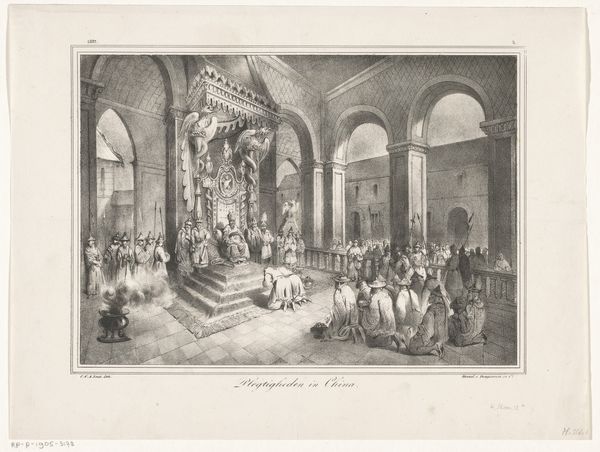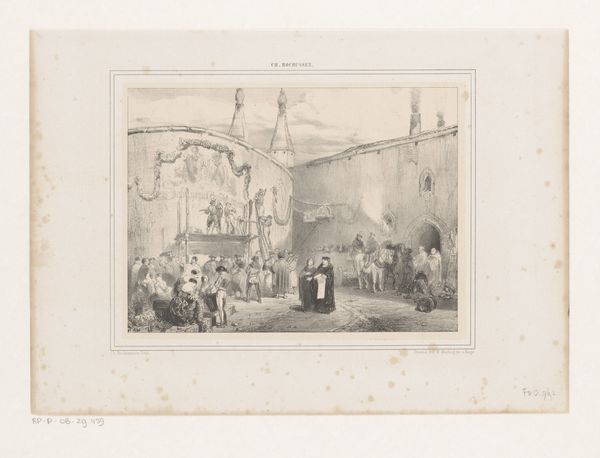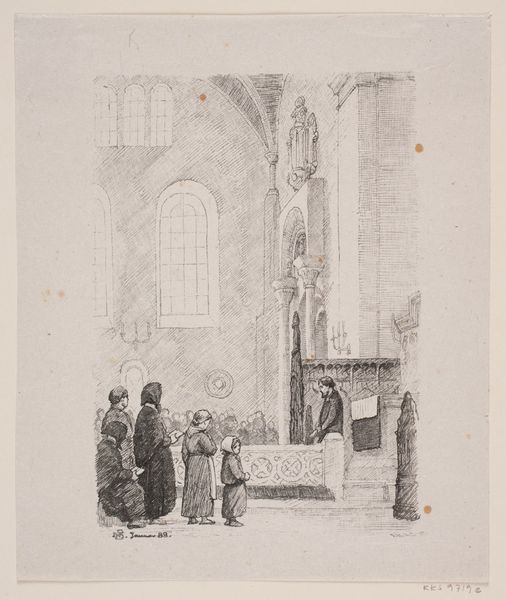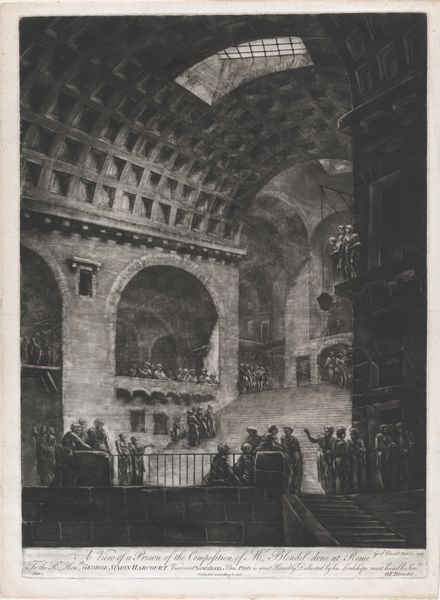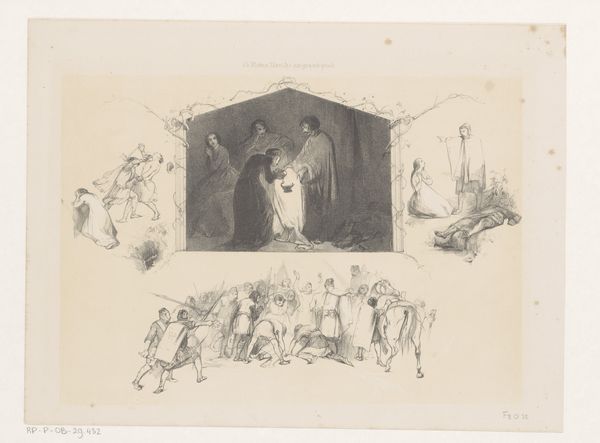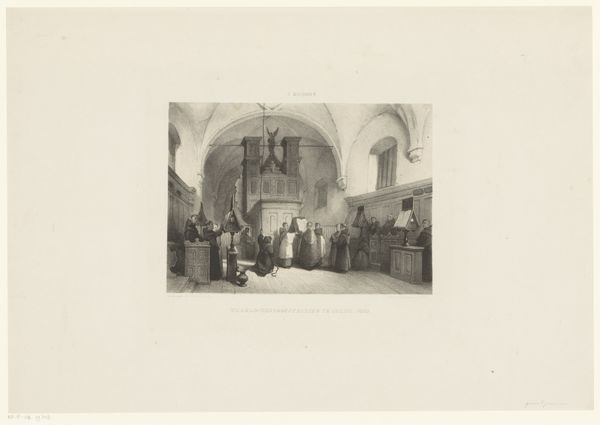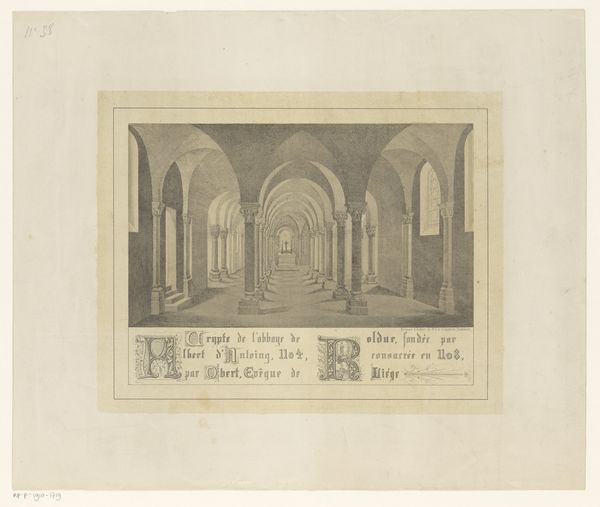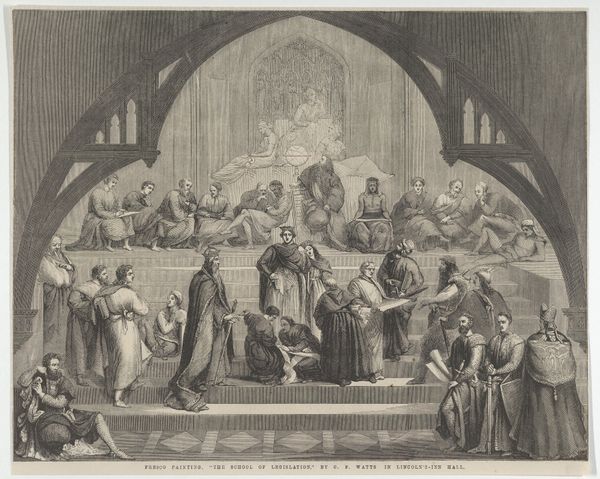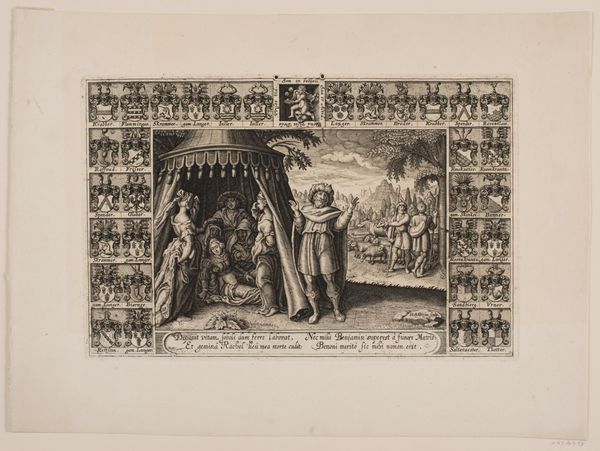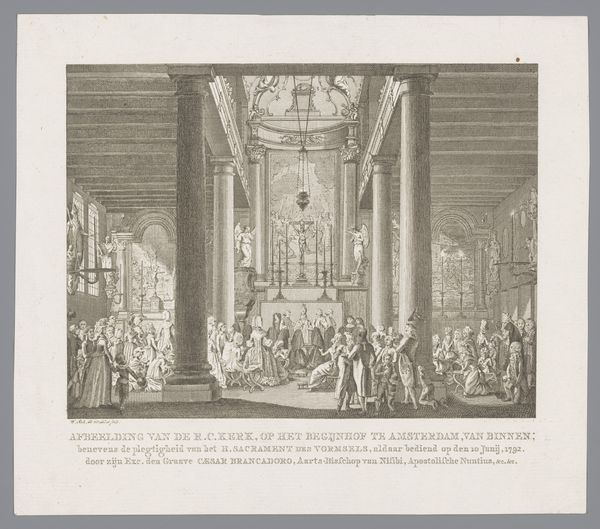
Dimensions: height 392 mm, width 530 mm
Copyright: Rijks Museum: Open Domain
Curator: A somber yet powerful stillness emanates from this drawing, doesn’t it? Editor: It does. This is "Golgotha Chapel in Jerusalem," an 1852 work by François Stroobant, currently held at the Rijksmuseum. It's an engraving, a testament to the meticulous detail achievable through printmaking. Curator: Meticulous is right. And the very subject speaks volumes. Golgotha, the site of profound suffering and sacrifice, demands that we examine its representation here. How do power structures—colonialism, religious authority—manifest themselves within this scene? Who is represented, and who is conspicuously absent? Editor: Let’s start with what is overtly present. Observe how Stroobant uses the medium itself—the stark contrast of ink on paper—to construct this architectural space. The vaulted ceiling, the repetition of the hanging lamps, and those receding niches create a tunnel-like vision leading toward the altar. It's a masterful demonstration of perspective. Curator: I find the romantic, somewhat theatrical quality fascinating, as if religion is on full display here for the colonizer to come in, document, and leave, unmoved by the real, lived experience and the weight of suffering this space is meant to hold. How does that artistic choice impact our understanding of faith and devotion? Editor: Interesting point. It emphasizes the church as performance and spectacle. Looking closer at the composition, observe how the eye is directed inwards—yet slightly upward. We are given only the backs of those kneeling; the monks on the left remain figures to watch over them. The geometry is, above all, structured. Curator: Which in turn implies the formal structure of religious institutions. These religious authorities dictate not just worship but the narrative itself. Who gets to tell the story of Golgotha, and whose voices are suppressed? Is Stroobant inadvertently reinforcing existing power dynamics? Editor: Perhaps. Still, you can't deny the intrinsic dynamism. The chiaroscuro—the interplay of light and dark—certainly gives the piece emotional depth, making this engraving visually, compelling in its own right. Curator: And that's the tension, isn't it? Aesthetically powerful yet laden with ideological implications, echoing colonialism’s grasp on narratives of faith and place. Thank you, I appreciate your close read on its technique. Editor: And thank you. Situating artworks like this within broader dialogues about history and power helps us to grasp just what gives this work continued life, across all this time.
Comments
No comments
Be the first to comment and join the conversation on the ultimate creative platform.

